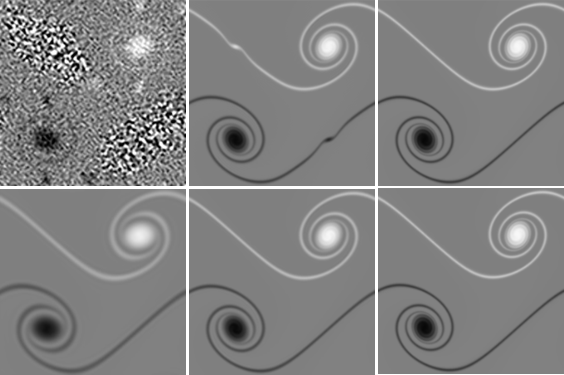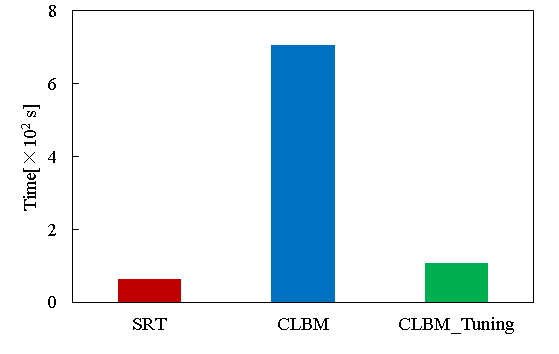Reseach related to buffet simulation
JAXA Supercomputer System Annual Report April 2016-March 2017
Report Number: R16E0108
- Responsible Representative: Yuichi Matsuo(Aeronautical Technology Directorate, Numerical Simulation Research Unit)
- Contact Information: Takashi Ishida(ishida.takashi@jaxa.jp)
- Members: Toru Yamaya
- Subject Category: Basic Research(Numerical analysis,CFD)
Abstract
The purpose of this study is to construct a fast unsteady CFD (Computational Fluid Dynamics) method with LBM (Lattice Boltzmann Method). Comparisons with SRT (Single-Relaxation Time) and CLBM (Cascaded-LBM) that are collision models are conducted in terms of the stability and the calculation time through the calculation of doubly periodic shear layer with a range of grid resolution. It is cleared that CLBM has the most stability with good accuracy in high Reynolds number regimes and the case of low resolution. However, compared to SRT, the calculation time of CLBM is 10 times longer. As a result of code tuning, the calculation time of CLBM is shortened by 85% compared with before tuning.
Goal
The purpose of this study is to construct the fast unsteady CFD (Computational Fluid Dynamics) method with LBM (Lattice Boltzmann Method)
Objective
Evaluate the performance of collision model for LBM by conducting verification calculation.
References and Links
N/A
Use of the Supercomputer
Perform unsteady analysis on verification calculation with LBM uncompressed analysis solver.
Necessity of the Supercomputer
The computational cost is large due to unsteady calculation by LBM, and the use of JSS2 is indispensable for fast processing.
Achievements of the Year
It is cleared that CLBM has the most stability with good accuracy in high Reynolds number regimes and the case of low resolution. However, compared to SRT, the calculation time of CLBM is 10 times longer. As a result of code tuning, the calculation time of CLBM is shortened by 85% compared with before tuning.

Fig.1:The vorticity field (Computational stability)(Columns: Collision models(SRT, CLBM), Rows: Division number of a side = 128, 256, 512)
Publications
N/A
Computational Information
- Parallelization Methods: Hybrid Parallelization
- Process Parallelization Methods: MPI
- Thread Parallelization Methods: OpenMP
- Number of Processes: 1
- Number of Threads per Process: 32
- Number of Nodes Used: 1
- Elapsed Time per Case (Hours): 0.0167-0.149
- Number of Cases: 7
Resources Used
Total Amount of Virtual Cost(Yen): 553,922
Breakdown List by Resources
| System Name | Amount of Core Time(core x hours) | Virtual Cost(Yen) |
|---|---|---|
| SORA-MA | 42,982.21 | 70,403 |
| SORA-PP | 0.00 | 0 |
| SORA-LM | 0.00 | 0 |
| SORA-TPP | 0.00 | 0 |
| File System Name | Storage assigned(GiB) | Virtual Cost(Yen) |
|---|---|---|
| /home | 476.84 | 4,498 |
| /data | 48,828.15 | 460,597 |
| /ltmp | 1,953.13 | 18,423 |
| Archiving System Name | Storage used(TiB) | Virtual Cost(Yen) |
|---|---|---|
| J-SPACE | 0.00 | 0 |
Note: Virtual Cost=amount of cost, using the unit price list of JAXA Facility Utilization program(2016)
JAXA Supercomputer System Annual Report April 2016-March 2017



